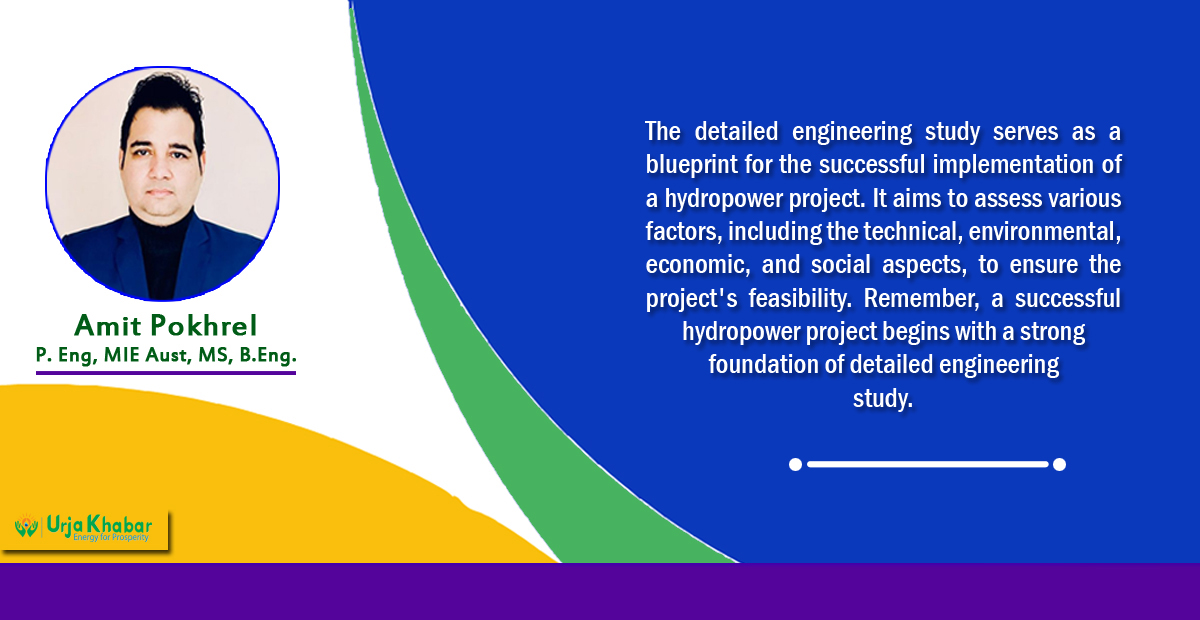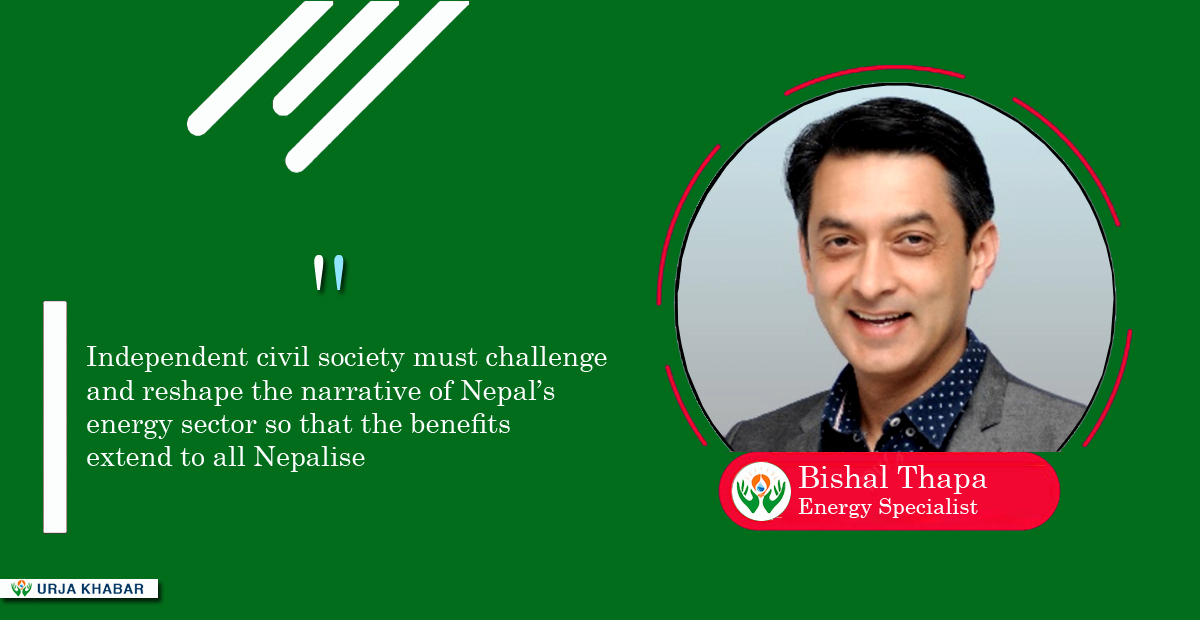Energy Update
Project Risk Management in Large Scale Infrastructure Development Project

Risk management is an essential component of effective project management, and is essential for influencing business and project results, as well as the successful procurement of products and services. Many managers already perform risk management activities, such as financial forecast analysis, scenario planning for project assessment, contingency allowance assessment in cost estimate, contract negotiation, or contingency planning.
Many managers don't use the term "risk" when they're doing these activities, but it's at the heart of what they're doing. By managing risk better, you'll see more successful activities. Identifying, analyzing, and assessing risk and handling the results go a long way toward making projects successful. But if you don't manage project risks well, they can have big, negative consequences for your organization's goals. Think about risk at the start of project planning and keep managing it throughout the project. Make sure risk plans and activities are part of your organization's management processes.

In order to effectively manage project and procurement risk, it is essential for the developer, contractor, and, where applicable, subcontractors to implement risk management processes that are consistent and transparent. These processes should foster effective communication and transparency between the parties in order to facilitate risk management in a timely manner. There are three key elements that are essential for successful project and procurement risk management:
• identifying, analyzing, and assessing risks early and systematically, and developing plans for handling them;
• allocating responsibility to the party best placed to manage risks, which may involve implementing new practices, procedures, or systems or negotiating suitable contractual arrangements; and
• ensuring that the costs incurred in reducing risks are commensurate with the importance of the project and the risks involved.

Project risk management encompasses risks related to the overall business model and concept, project design and execution, project transition, and the comprehensive operations and processing of the asset or capability delivered.
Business risks are those that have the potential to affect the financial viability of an organization, including those arising from market, industrial, technological, economic, and financial elements, as well as governmental and political factors. Project risk is any risk that could affect the cost, time frame, or overall quality of a project.
Operational and processing risks are those that could affect the design, sourcing, construction, commencing, operating, and maintenance operations, including significant risks and catastrophic events. Project risk management is one of the most prominent topics of current research. Risk management is the process and organizational structures that are designed to effectively manage potential opportunities and adverse impacts.
The process of risk management involves the systematic implementation of management policies, procedures, and processes to address the challenges of context, identification, analysis, assessment, treatment, monitoring, and communication of risk.
Risk analysis, on the other hand, is the systematic utilization of available data to determine the frequency of specified events and the extent of their effects. It may employ a broad range of mathematical models and other tools and techniques. Risk assessment determines whether a risk is acceptable or unacceptable and determines which risks should be given the highest priority in the development of risk treatment responses.
Risk, in the context of a project, is the probability of an event occurring that will affect the achievement of objectives. It involves the possibility of a loss or gain or a deviation from an expected or planned outcome as a result of the uncertainty surrounding the implementation of a particular action. Risk therefore comprises two components: the probability or likelihood of an event occurring, and the effects or consequences of an event if it does occur.
Risks are caused by the uncertainty of the future. Exposure to a risk may result from economic, financial or social losses or gains, physical harm or injury, or delays. It may also result from alterations in the relations between parties involved in the provision, ownership, operation and maintenance of resources for public or private use. Risk management offers a systematic approach to evaluating and managing future uncertainty. Historically, risk management has focused on the consequences of events and alterations in the physical, social or economic future. The concept of risk management implies that risks should be managed in an orderly manner.
The risk management requirements for a project proposal vary depending on the stage of development and the scope of the project. For large-scale projects, multiple risk assessments may be carried out, such as at the conceptual design and assessment stages of the project proposal, in order to identify and assess alternatives to the project plan, in order to prepare for tendering and contract negotiations, in order to construct the approved project and its operations.
Risk management processes help planners and managers to identify major risks and develop strategies to manage them and their associated risks. This results in more effective and efficient decision-making, greater assurance of results, and decreased risk exposure. Later stages of a project are focused on efficient and effective execution. Risk management is focused on achieving more favorable and dependable outcomes in terms of timeliness, budget, and quality of project and service delivery. Many organizations carry out projects with substantial capital investments, or clusters of related projects that collectively form large programs.
The implementation of effective risk management processes allows senior managers to better allocate resources to manage risks. This will enable them to be more cognizant of the risks to an organization and to implement effective control measures to reduce them. In the event of a negative outcome, those responsible will be able to prove that they exercised due diligence, the basis of any decisions affecting the risk and the organization's response to it. In the course of several construction audits conducted on private and public organizations, it has been observed that risk management is often not implemented effectively, and in some cases, it is not addressed. The executives of those organizations are now demanding that risk management is implemented effectively to meet the management needs of the organization and to address the weaknesses identified in the construction audit activities.
The traditional procurement environment has been altered by the emergence and proliferation of structures such as Build and Operate (BO), Build Own Operate and Transfer (BOOT), Public Private Partnerships (PPP), and Public Finance Initiatives (PFI) for the acquisition of assets and capabilities. These structures necessitate distinct contractual structures and distinct modes of control and responsibility, each of which presents its own set of risks. In the context of the review of the Government's capabilities and the respective roles of the public and private service providers, a number of government agencies are considering or undertaking a variety of new or distinct activities outside of their traditional areas of activity.
Therefore, risk management is a key part of strategic planning for everyone involved in the new relationships and ways of service delivery. There are several key stages of risk management, which are monitored and reviewed to provide feedback. In most cases, risk management is integrated with other management activities, as many of the stages are carried out as part of the normal project management process. This establishes the foundation for the integration of risk management with project management activities. Risk management is a big part of the effort to make government procurement better and more efficient. It's all about making sure risks are spotted early, the best ways to manage them are chosen, and big risks are kept to a minimum. In this way, government goals are pretty much the same as the private sector goals - getting better project results, being more efficient and effective, and having the right mix of risk and reward.
Reference
• Project Management Full Course | Learn Project Management In 8 Hours | Simplilearn - YouTube
• Project Management Tutorial (Complete Course) - YouTube
• Project Management Lecture 1 - YouTube
• What Is Risk Management in Projects? - YouTube
• Project Risk Management - How to Manage Project Risk - YouTube
• Risk management basics: What exactly is it? - YouTube
• The Project Risk Management Process | 5 Tips for Success (northeastern.edu)
• The Risk Management Process in Project Management - ProjectManager
• What is Project Risk Management? - Institute of Project Management
• How to Manage Project Risk: A 5-Step Guide | Coursera
• What Is an Implementation Plan? 6 Steps to Create One [2023] • Asana
• What Is Project Risk Management? (hubspot.com)
• The Risk Management Process in Project Management - Explained (invensislearning.com)
• What Is Project Risk Management? Here’s Everything You Need to Know | Capterra
The Author of this article works as a Senior Contract management and Project Expert in the Energy Business of Golyan Group, Kathmandu, Nepal
Conversation
- Info. Dept. Reg. No. : 254/073/74
- Telephone : +977-1-5321303
- Email : [email protected]














